Glass programmed using the TPS procedure restructures the water in the bottle.*
On its way from the spring to the tap, water travels through long straight pipes made from different materials — lead, asbestos, plastic, etc. This is not water’s natural environment, as water normally flows across different types of rock and through different layers of soil. Substances with which water comes into contact have a vibrational effect on the water, and this vibrational effect can be imprinted onto it for a certain period of time — coherent domains of water molecules resonate with this vibration for a longer period of time[1]. The same thing happens in bottles or water dispensers in which water is stationary for a longer period of time.
With the Flaska bottle, we bring the vibrational structure of water closer to the structure of spring water, i.e. water in its natural environment - this is called water structuring. Using TPS (technology of programming silicon), a vibrational programme consisting of various kinds of information from nature is imprinted into the glass.
Glass programming using the TPS procedure:
- First, three symbols are engraved into the glass: the first one is the batch designation (e.g. ACK1), which allows for quality management and monitoring. The second one is a (circular) cosmogram or a mandala, which provides protection of the vibration programme in the glass. The third symbol, ORO, in a rectangular frame ensures a more efficient water structuring.
- The “old” vibrations are then removed from the glass in order to increase the efficiency of the programme written into the glass.
- In the third phase, the bottles are programmed with orgone cannons manufactured by the German manufacturer Bioaktiv. The vibration programme contains various information from nature that are in harmony with the water structure and thus influence it. This phase of the process is the longest and takes 90 minutes. The vibration programme is then stored into the silicon dioxide (SiO2) in the glass – the glass contains approximately 71% of SiO2.
When water comes into contact with glass programmed in this manner, information is transferred onto it through the quantum electrodynamic oscillations of coherent domains in the glass[1].
Glass programming and water structuring explained in a short clip
The idea of TPS resulted from our practical experience in the cultivation of strawberries, as there proved to be a significant difference between strawberries watered with “regular water” and strawberries watered with vibrationally structured water. While seeking an answer to the question of how these changes occurred in water, we first came across Viktor Schauberger, who had discovered in a completely unscientific way that water hides some unusual characteristics. Of course, continuing our research, we could not help but come across modern pioneers such as Preparata, Szent-Gyorgyi, Del Giudice, Pollack, Chaplin and others who have provided theoretical explanations of phenomena observable in practice.
Flaška d.d. guarantees, that every Flaska’s water restructuring program will be fully efficient at least 4 years from the date of purchase.
Recommendations and tips:
- Do not wash your Flaska bottle in a dishwasher or leave it in the direct vicinity of devices which emit strong electromagnetic radiation (e.g. a working microwave oven).
- The vibrational structuring of water begins immediately after water is poured into the Flaska bottle — wait at least five minutes to ensure full effect.
- Before drinking, shake the Flaska bottle a couple of times. Water “loves” motion, and the effect of vibrational structuring will increase, as the coherent domains will expand and strengthen.
Please find more information on water structuring Theoretical basis and Terminology below.
Various measurements were carried out using alternative research methods as part of the analysis of the effects of the Flaska bottle.
Masaru Emoto water crstals photographs of water from Flaska:
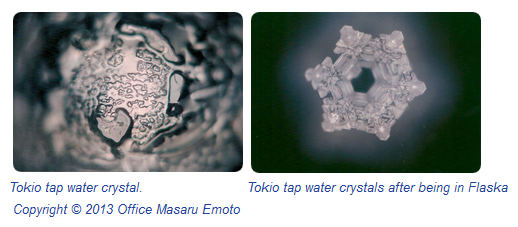
Sources:
[1] Arani R, Bono I, Del Giudice E, et al. QED coherence and the thermodynamics of water. Int J Mod Physics 1995; 9: 1813-41.
* This page content is based on findings and theories that are not recognised or addressed by official institutions.
Theoretical basis
The transfer procedure and the effect of molecular information have been independently confirmed by several institutions, including the Slovenian Bion Institute, which conducts research in the field of bioelectromagnetics and which has also confirmed the effects of information on bacteria and plants, to which the placebo effect does not apply[1].
Quantum electrodynamics explains how the interaction of the photons of an electromagnetic field with water molecules results in the entrapment of the field in the group of molecules, as the collective electron excitations and relaxations of the molecules render the photons unable to disappear back into the background from which they came. This produces a coherent domain. In accordance with electrodynamics, the internal resonance of a coherent domain also attracts other molecules when they come near it. This results in a special mixture of matter and field, which can be referred to as energized matter[2].
Small-angle X-ray scattering studies have shown that regular drinking water comprises two different fluids of different densities; one fluid has a greater density and consists of microstructures (coherent domains), whereas the other has a lower density and consists of free molecules[3].
Studies in which water was irradiated with infrared light have shown that it can take more than a day for water to restructure after irradiation[4].
Certain studies have also shown the presence of large domains in water[5].
These and numerous other studies and theoretical bases provide an explanation as to how the vibrational structure of a certain substance affects another compatible substance. As this occurs at a subtle, non-thermal level, detecting it requires special methods, which currently are predominantly being studied by alternative sciences.
Sources:
[1] Jerman I, Ružič R Krašovec R. Škarja M Mogilnicki L. Electrical transfer of molecule information into water, its storage and bioeffects on plants and bacteria. Electromagnetic Biology and Medicine 2005; 24(3): 341-354).
[2] Arani R, Bono I, Del Giudice E, et al. QED coherence and the thermodynamics of water. Int J Mod Physics 1995; 9: 1813-41.
[3] Huang C, Wikfeldt KT, Tokushima T, et al. The inhomogeneous structure of water at ambient conditions. Proc Natl Acad Sci USA 2009; 106: 15241-6.
[4] Yokono T, Shimokawa S, Mizuno T et al. Clathrate-like ordering in liquid water induced by infrared irradiation, Jpn J Appl Phys 43 2004; L1436–L1438.
[5] Yinnon C, Yinnon T. Domains in aqueous solutions: theory and experimental evidence. MPLB 2009; 23(16): 1959-73.
Terminology
Allium test — the Allium or onion test is a biological test used to determine how organisms respond to certain substances. Onions are used as the test organism because their behaviour in response to substances in the environment is accurately predictable. The test is used to determine the overall cellular toxicity (cytotoxicity) of certain substances and the capacity of substances to damage DNA (genotoxicity). Genotoxicity is determined using the Allium metaphase test, which reveals different chromosome anomalies induced as a result of the exposure of the organism to a certain harmful waterborne substance. This short test presents the combined overall impact of pollution with the interaction between the test plant (Allium cepa L.) and potential genotoxins and encompasses a statistical evaluation of the results. The test indicates the overall impact on the growth and development of live cells or organisms and detects the presence of harmful substances in concentrations significantly lower than the limit capacities of non-biological analytical methods. Out of approximately 700 identifiable toxic and genotoxic substances, which can potentially find their way into drinking water, less than 10 percent can be detected using conventional physicochemical analyses (source: EU Chemical Bureau, Natural Resources Defence Council: Think before you drink).
Biofield — a modern concept in bioelectromagnetics used to describe the complex system of mutually interacting electric and electromagnetic fields in living organisms. The biofield enables instantaneous, far-reaching interactions between different parts of the organism.
Coherence — the internal coherence of the parts of a given whole. For instance, the light of a laser is coherent because the stimulated atoms or molecules in the laser emit light (photons) at almost identical intervals, resulting in the laser emitting an intense and focused light.
Coherent water molecule domains — a phenomenon described by the theory and confirmed by experiments in the field of quantum electrodynamics. At critical density, a group of molecules evolves towards a coherent ground state, where the molecules oscillate in phase with a certain electromagnetic field. Such a group of molecules is referred to as a coherent domain. At each temperature, liquid water consists of a certain share of a coherent phase of molecules in such a ground state and of a normal phase, and the motion of the molecules is determined by thermal excitations, i.e. they follow a so-called Brownian motion.
Cosmogram — the cosmogram, also called a mandala, depicts the archetype (original form or symbol) of water in its neutral state. It originates from the ancient tradition of so-called holy geometry, which was used in designing and furnishing sacred structures in Egyptian, Greek and Roman architecture, and was made exclusively for the Flaska bottle and its information record.
Date on the Flaska bottle — the date indicating the passing of 4 years since manufacture is engraved on the Flaska bottle under the cosmogram. After this date, depending on the environment in which the Flaska bottle is used, the effect of the bottle gradually begins to weaken. In urban environments with a wide range of different electromagnetic radiation (mobile phones, wi-fi, radio and TV signals, etc.), the weakening is accelerated. Even so, it can be said that the Flaska bottle retains a significant portion of its effects on water even after 5 years or longer.
Evapo image — using a procedure which was developed towards the end of the 80s by Ruth Kübler, an artist from Stuttgart, the Institute for Statics and Dynamics of Aerospace and Astrospace Constructions of the University of Stuttgart has researched the physical and biophysical effects on water since 1999. This procedure enables us to study how different treatment procedures and the presence of organisms, substances and physical fields affect water structure. The term “Evapo image” refers to the microscopic method used to analyze samples formed by dry matter after droplets are uniformly dried out. The microscopic observation is done at relatively low magnification in a dark field using deflected light.
GDV camera and measurement parameters (area, intensity, entropy and others) — a system used to capture and analyze corona discharges around objects. It works on the basis of a Kirlian camera. When an object (a finger, leaf, metal conductor, etc.) touches the high-voltage plate, it causes an electrical discharge in the form of a corona with streamers of different shapes. Dr. Korotkov’s team, which developed the GDV system, also created a programme which describes the shape of the discharge using statistical parameters and interprets individual shapes on the basis of an extensive database. These parameters include the surface area of the discharge, brightness, brightness level entropy, etc. The system is often used as an alternative diagnostic method for the human organism.
Orgone or orgone energy denotes life force that way named as such in 1930 by Dr. Wilhelm Reich. In the West, baron Carl Von Reichenbach used the expression the Odic force even before him, in mid-19th century. In eastern cultures, expressions such as chi, qi, mana, prana are used for the same kind of energy. The traditional western science does not recognize this type of energy. In the course of his life, Wilchelm Reich built several devices with the purpose to concentrate this energy, the best known of them being the orgone accumulator and the orgone cannon.
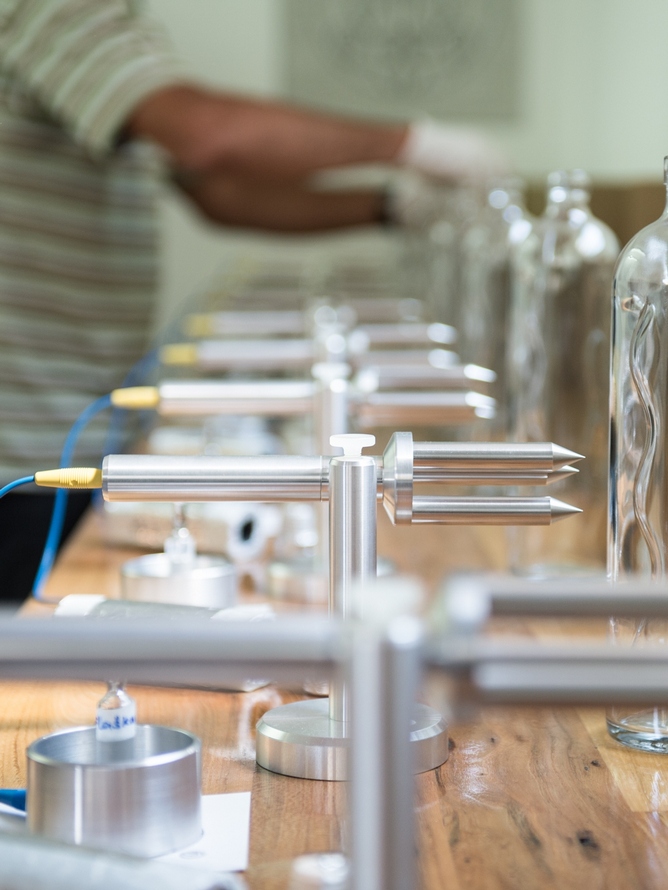
Orgone cannon (orgone radiator) is a device that operates by means of concentrated orgone energy. The inventor of this original design is Dr. Wilchelm Reich, whereas his plans are nowadays used by several German companies (e.g. Bioaktiv) for the production of various modern variants of orgone cannons. In the first place, the device is used for alternative therapies, whereas Flaska uses it in their TPS procedure.
Quantum electrodynamics — the quantum field theory of electrodynamics (i.e. electromagnetism). It describes how photons and matter interact and is the first theory to properly combine quantum mechanics and special relativity.
Quantum field — the quantum mechanical model of a certain physical field.
Molecular information — the specific energy and vibrational effect of the molecules of a certain substance (or individual atoms or ions) on the environment. Molecules affect the quantum fields around them with their energy levels and oscillation. If molecular information is amplified and transferred, it can be imprinted onto the coherent domain of molecules of another substance, which is altered accordingly. In non-technical terms, it is said that the other substance is informed or programmed. The oscillation typical of the source substance (its molecules) can persist in the coherent domains of the other substance for long periods of time and can be absorbed into the organism of a human or an animal and transferred onto the coherent domains of the organism when ingested.
Vibrational structure of water — represents the structure of molecular oscillations in water. Molecules which are part of a coherent domain oscillate in phase (according to the prior influence of a certain electromagnetic field), whereas molecules which are not part of a coherent domain oscillate freely and incoherently.
Vibrational effect on water — the transfer of molecular information from a certain substance onto water. Coherent domains in water can oscillate for long periods of time with this information, thereby affecting their surroundings (through coherent energy vibrations, see also the explanation of molecular information).
Water crystal photography — the method is used by Office Masaru Emoto, LLC. Whereas a snow crystal has a beautifully symmetrical hexagonal shape, many observed water crystals are deformed. The deformation pattern varies considerably among individual water samples. Tap water which has undergone chlorination is most likely to form more deformed crystals and less hexagonal crystals than natural spring water. This can be partially attributed to the effect of residual chlorine. Some researchers point out that there is a correlation between the formation of water crystals and the level of pollution of the water. Recent research has shown that the information or energy of music, sound or words can also affect the formation of water crystals. There is thus considerable evidence that the formation of water crystals does not only reflect the physical but also the information or energy aspect of water.
Research and measurements
1. Office Masaru Emoto Tokyo, Japan; Flaska water crystal experiment
Course:
Freezing temperature -25°C, freezing time 4 hours, examination temperature -3°C, Olympus Optical Microscope (x200), 50 water samples from a Flaska bottle examined and 50 control samples examined, carried out on 14 December 2012.
Measurement results:
2. Tunjice Healing Resort; Report on the processing of water from a Flaska bottle using a GDV camera
Course:
3 water samples, 100 measurements for each, carried out on 28 June 2011.
Measurement results:
|
|
Surface area |
Average intensity |
Entropy |
RMS index |
|
Tap water |
9518 |
5686 |
1.195e+004 |
1.135e+004 |
|
FLASKA 5 Min. |
1.395e+004 |
1.441e+004 |
1.832e+004 |
1.781e+004 |
|
FLASKA 1 Hour |
2.169e+004 |
2.505e+004 |
1.488e+004 |
1.599e+004 |
|
Criterion |
100.8 |
250 |
27.01 |
29.53 |
|
p-value |
0.002544 |
0.006261 |
0.0007018 |
0.0007639 |
Conclusion:
The study showed that the Flaska bottle causes changes in water. A greater effect was noticeable in water which had been in a Flaska bottle for 1 hour. This water showed greater variation in surface area and intensity. Water which had only been in a Flaska bottle for 5 minutes showed an increased entropy and RMS index. The table displays the differences in values.
Link to report: GDV camera report
3. Bion, Institute for Bioelectromagnetics and New Biology; Report on the testing of the effects of water from a Flaska bottle on the human biofield
Course:
Samples from 10 persons, 6 measurements for each, carried out on 10 January 2013.
Measurement results:
Water from a Flaska bottle presumably has beneficial properties which affect the activation, entropy and overall energy of human organisms at the biofield level.
Measurement example: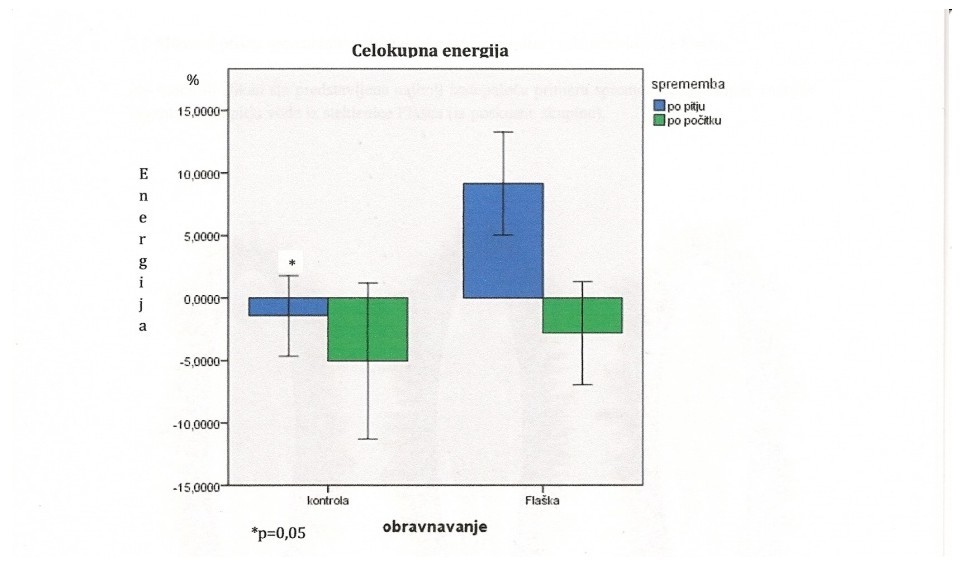
4. Peter Firbas, Private Laboratory of Plant Cytogenetics; Flaska bottle testing
Course:
4 measurements, 5 onions used for each, 200 metaphase cells examined, carried out on 28 June 2011.
Measurement results:
The level of genotoxicity decreases in the Flaska bottle from 20,0 percent to 11,0 percent. The results were obtained using Allium cepa L. onions.
Allium metaphase genotoxicity test for drinking water, environmental samples and chemicals.
|
Sample
|
Metha-phase Index | Number of Metha-phase Cells | Number of Cells with Chromo-some Anomalies |
Level of Geno-toxicity (%) |
Average root lenght (mm) |
|
I |
72 |
200 |
40 |
20,0* |
32 |
|
II |
72 |
200 |
22 |
11,0* |
35 |
|
III |
72 |
200 |
5 |
2,5 |
40 |
|
IV |
72 |
100 |
21 |
21,0 |
22 |
Link to report: Allium test short
5. European Institute for Water Diagnostics – EIWD; Evapo Image Testing
Course:
6 bottles in the test group and 6 bottles in the control group, carried out on 2 August 2012.
Measurement results:
The Flaska bottle showed a minor improvement in water droplet development structure, which is considered as a sign of higher water quality. Additional measurements with a larger number of samples are recommended.
Measurement example: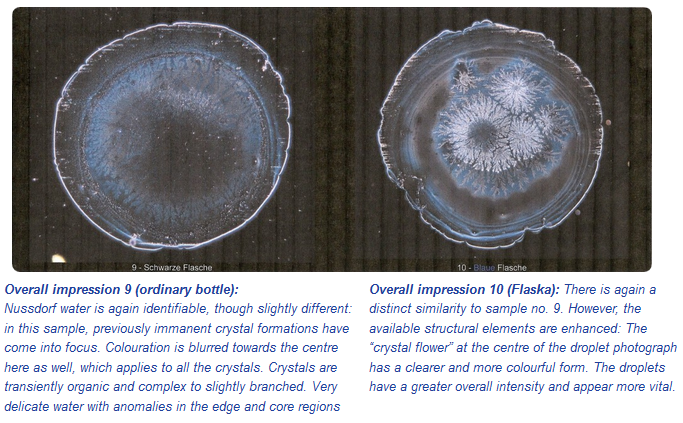
6. Bion, Institute for electromagnetics and New Biology, Evapo testing
Course:
15 samples, 100 photos per sample, testing date: 28 August 201?
Conclusion:
The remains of the drops of the tested C mineral water have a well pronounced edge, a circle of a varying thickness, as well as a variety of mineral structures. Their true complexity is only visible with a high-resolution microscope inspection with a 100x to 400x magnification, which is inevitable for a plausible sphericity index assessment. The sphericity index of the Flaska samples is typically higher (by 55%) than the one of the non-incubated water (p = 0.03). Also the sphericity index of the Flaska typically differs (by 44%) from the sphericity of the samples from the control Flaska (p = 0.008).
Video report:
Measurement and testing summary
The described measurements examined water from a Flaska bottle from different perspectives and compared it to identical water which was not in a Flaska bottle. The measurements revealed different changes in the water: we have found a common denominator in the term “vibrationally structured water”. We would like to stress that this evidence is not recognized or dealt with by official science and accepted standards and is, for the time being, the subject of so-called alternative sciences.
Pioneeers of water research
Viktor Schauberger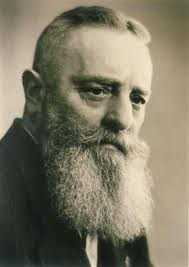
Viktor Schauberger (30 June 1885 to 25 September 1958) was an Austrian forester, environmentalist and inventor, who was just like his contemporaries Nikola Tesla and Wilhelm Reich far before his time. Already at a young age, he refused to partake in traditional education and preferred to spend his time in the woods, where he discovered many a revolutionary finding by primarily observing water.
His first big success came in 1922, when he managed to drive logs extremely efficiently from higher altitude forests into the valley on innovatively constructed wooden log slides. He received the promised award for his achievements and of course a fair share of envy from traditionally educated engineers. The water slides efficiently served their purpose in Austria, Bavaria and Yugoslavia for quite a few years, however, Viktor was disappointed to find out that his invention resulted in clear-cutting as well as the complete degradation of the natural environment.
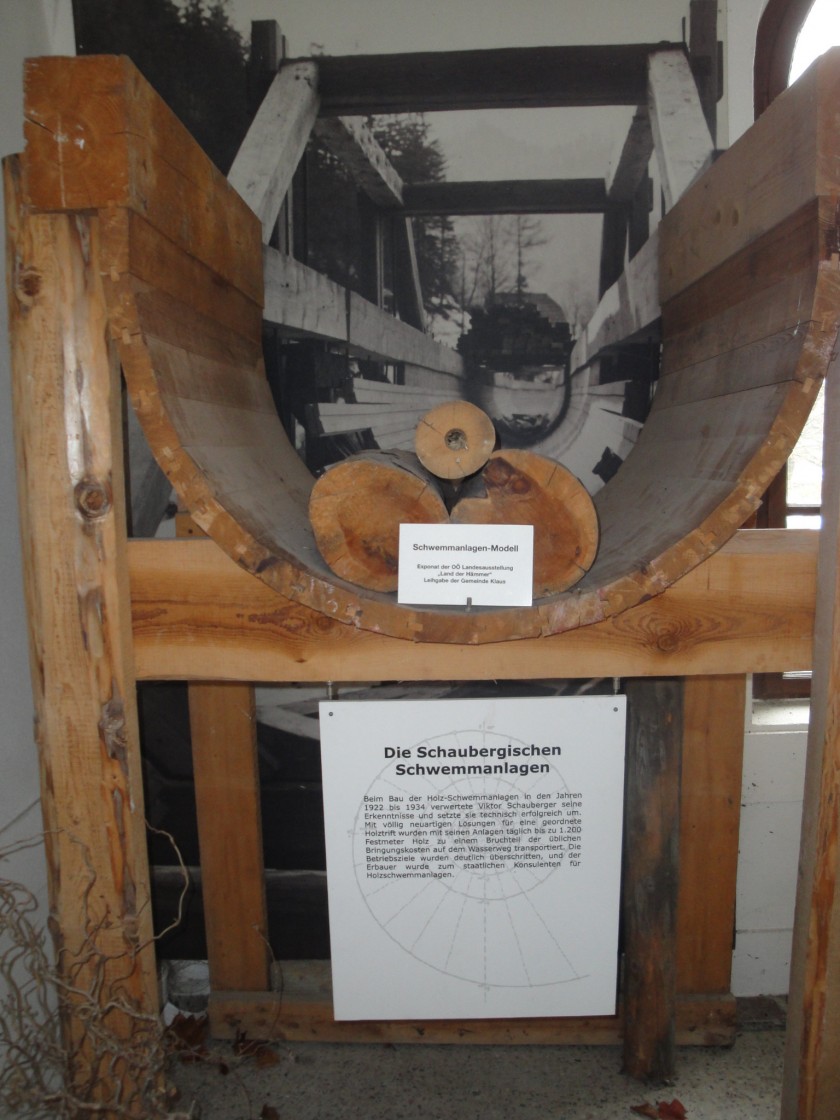
In the years from 1928 to 1935, Viktor Schauberger dedicated a lot of his time to developing a device for the production of living water, i.e. water with an enhanced structure as well as all the necessary minerals. According to his theory, spring water is the optimal choice for life and health, since it rises in an unspoilt environment. Due to human interaction, the number of intact water springs has reduced. On the other hand, the structure of water has been destroyed due to its unnatural movement through straight pipes made of man-made materials. The first built device may have been inconvenient for handling, however, it has cemented Schauberger’s reputation as the “water magician” that he had already gained with his water slides.
He was also active in the field of waterway restoration – based on Schauberger’s findings, several rivers in Austria in which the water had a destructive effect have recently been restored.
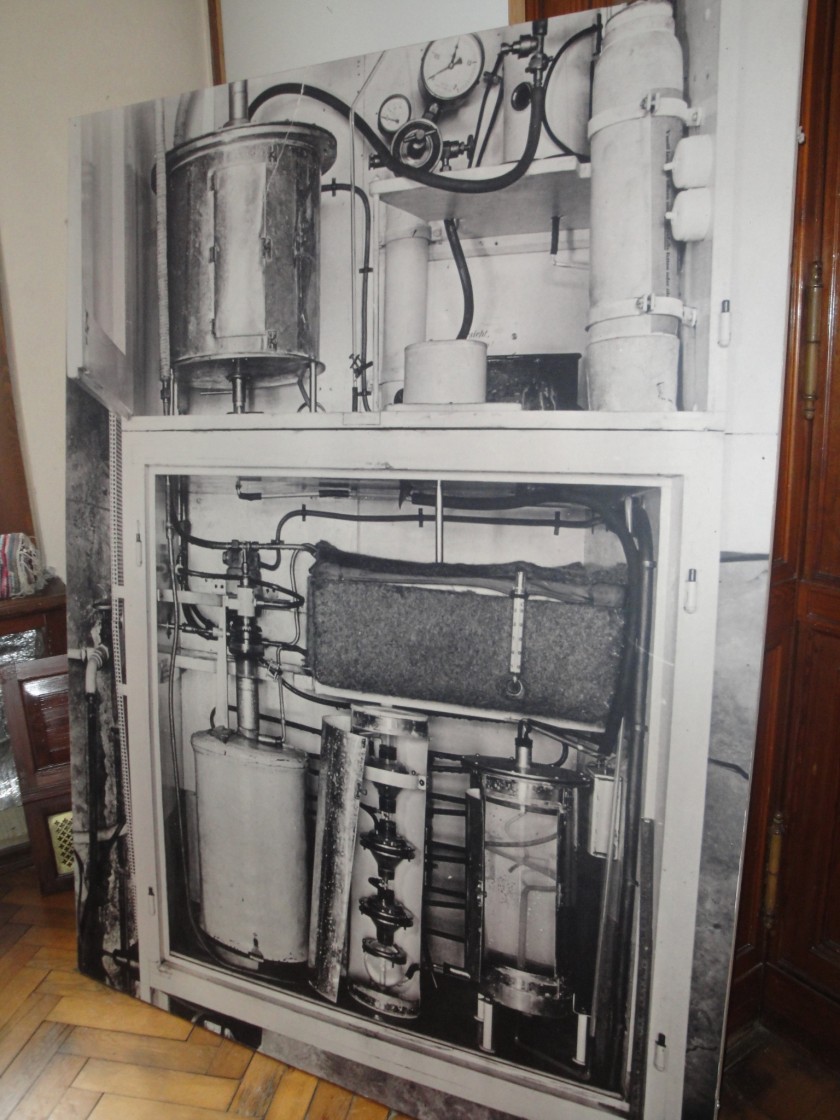
His further research increasingly leant towards the field of energy. Consequently, he developed the implosion theory. It states that energy generation by means of an explosion (petrol engines, nuclear energy) is destructive and harmful to the environment. Implosion on the other hand means an increased concentration of energy. Typical examples of such energy in the natural environment are a whirlpool and a whirlwind.
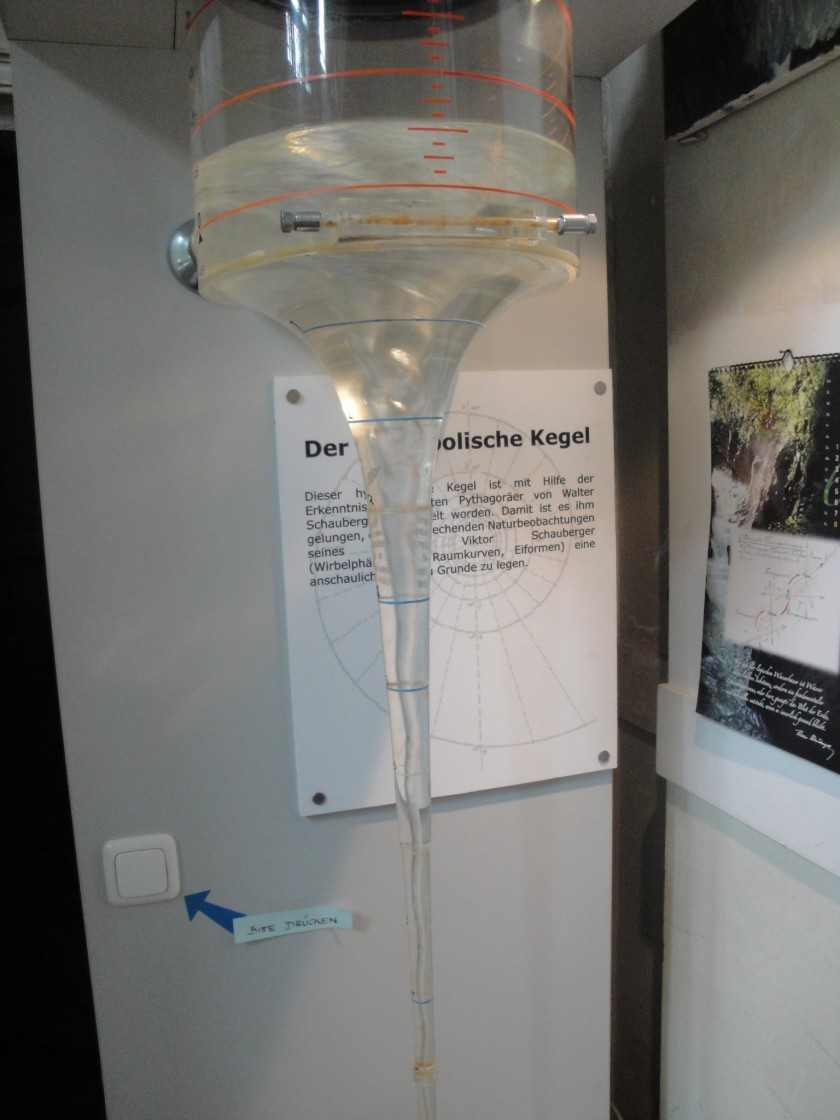
For Schauberger, World War II was highly unpleasant since he was forced to join in the German Army. Afterwards, his desire was to contribute to the healing of the Earth and the restoration of nature. That era fostered many of his inventions, such as copper as well as a special soil-energizing plough.
In 1958, an investment fund lured him to the USA. Viktor saw his emigration as an opportunity for the development of his non-centralized and environmentally friendly energy generation by means of implosion, however, he later realized that the investors’ intentions were not fair. He was forced to give up all of his paperwork and prototypes in order to be able to return to his fatherland, where he passed away soon after his return.
His work was continued by his son Walter, who also founded the PKS Institute in Bad Ischl in Austria. At the PKS Institute, some of Viktor’s inventions can be seen. Every two years, it also hosts the ICOST conference, in which we participated in June 2012.
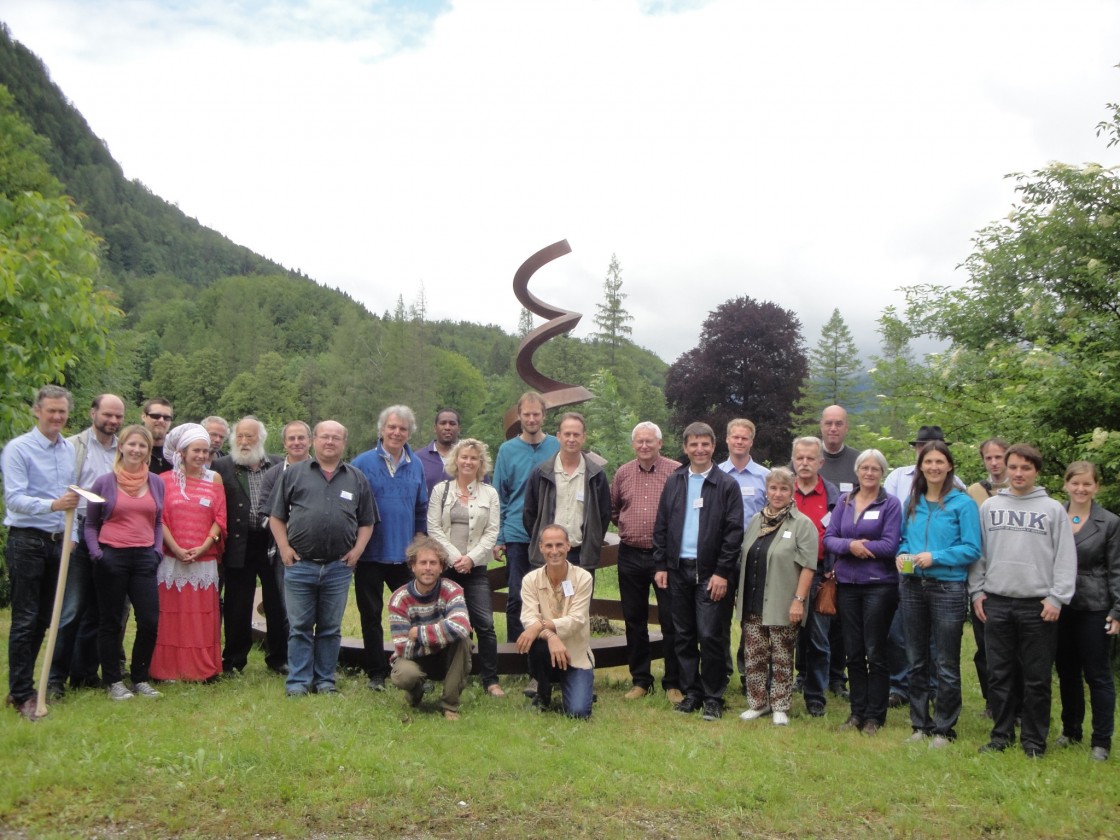
Viktor Schauberger was certainly one of the most visible pioneers in the field of water and energy research. Since his philosophy (and inventions) differ significantly from generally accepted know-how, his works are known to a lesser extent. But it certainly doesn’t mean that it doesn’t deserve our attention. In this short article, it is impossible to cover the whole life’s work of Viktor Schauberger, therefore we would just like to point out the work Living Water by Olof Alexandersson. There are of course several other books available, but the aforementioned one covers his works the most extensively. Anyone who wishes to indulge in further research can also view numerous videos dedicated to his work on YouTube.
Our Strawberry Fields in Begunje, Slovenia.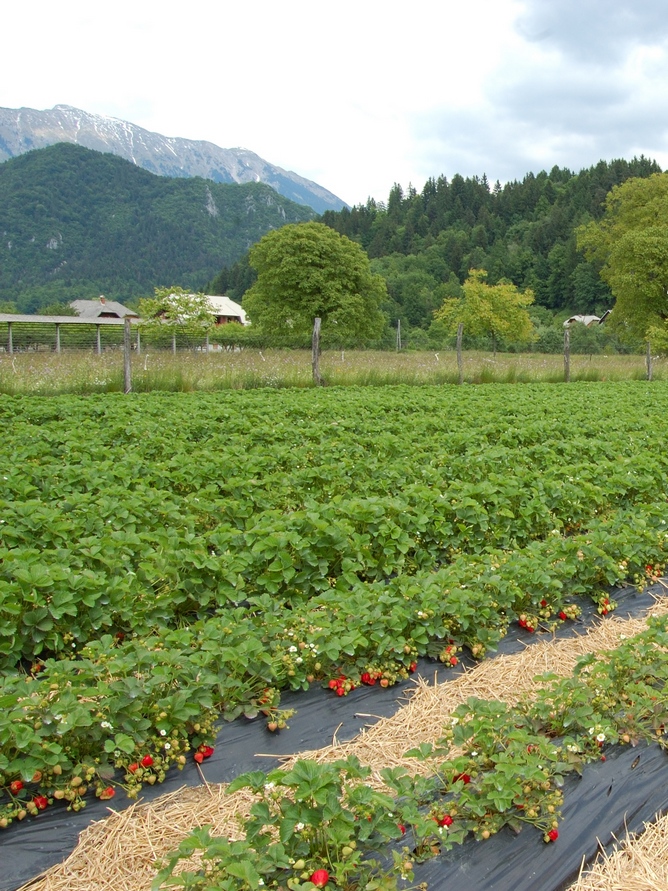
Team Flaska constantly follows Schauberger’s observation and nature imitation philosophy. His work also answers our question, how it is possible to produce higher-quality strawberries merely with the aid of structured water. Today, the TPS technology ensures that every Flaska user has their own water spring.
Dr. Masaru Emoto
Born July 22, 1943 (Yokohama, Japan) - died October 17, 2014 (Japan)
Dr. Masaru Emoto is a Japanese researcher whose photographs of water crystals are responsible for us not perceiving water merely as H2O molecules any more.
He was born in 1943 in Yokohama. In 1992, he graduated from the Open International University with a PhD in alternative medicine. His approach is not strictly scientific, but rather comprehensive and opens new possibilities for different ways of perceiving water. During his work, he figured out that water is closely connected to an individual’s or a group’s consciousness, and that it is also extremely sensitive to other vibrations and information, such as music or words.
Dr. Masaru Emoto’s method is based on the principle of freezing various 0.5ml water samples. Then, small pieces of ice are then extracted from the samples and used as the so-called “seeds” from which a water crystal is later grown. Crystals are formed at a temperature of between -5 and 0°C in various shapes based on which Dr. Emoto makes conclusions about the quality of the water. Water with a destroyed internal structure (due to mechanical, chemical or vibrational influences) does not form crystals or forms crystals with an irregular shape. Spring water usually forms hexagonal crystals, which is the same as the crystal of water from Flaska in the photo.

Dr. Emoto has written several books among which the best known is Messages from Water. In the book, various waters from all over the world reveal their respective face by means of photos of their crystals. The photos are evident enough for us to abandon the obtained technical-mechanical approach towards water and adopt a new one that treats water in a comprehensive way. The aforementioned book is the best indicator that not even two waters in this world are completely identical. It may already be deep in our consciousness and may have already been known to our forefathers, but Dr. Emoto was the one who demonstrated it to us explicitly.
The work by Dr. Masaru Emoto is well presented in the movie What the Bleep Do We Know?, where the authors demonstrate all the complexity of the world we live in.
The common thread of Dr. Masaru Emoto’s work and the mission of Flaska is to encourage respect towards water, which is a necessary precondition for a quality lifestyle for today and tomorrow. The future will tell to what extent we have succeeded in that.
Martin F. Chaplin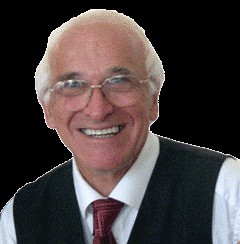
Martin F. Chaplin from the Applied Sciences Department at London South Bank University has dedicated a significant share of his research to water. His website Water structure and science offers a plethora of facts about water and is a credible source of information for everyone wishing to know more about water.
Based on scientific research, he has started to study the phenomenon of the “water memory”, which is in his opinion deceiving in the verbatim meaning of the phrase. In his work, he introduces strict distinction between the durability of various water structures and the way homeopathy works. However, Martin F. Chaplin is also critical towards his colleagues who only wave their hand when hearing of water memory and turn their backs on this idea. He strongly roots for the viewpoint that all the pro et contra evidence needs to be studied before we can make a judgement on water and its structure.
Introductory words from his website:
Water properties
Water is the most studied material on Earth but it is remarkable to find that the science behind its behavior and function are so poorly understood (or even ignored), not only by people in general, but also by scientists working with it every day. It can be extremely slippery and extremely sticky at the same time. The small size of its molecule belies the complexity of its actions and its singular capabilities. Liquid water's unique properties and chameleonic nature seem to fit ideally into the requirements for life as can no other molecule.
A number of explanations of the complex behavior of liquid water have been published, many quite recently, with several stirring up great controversy. In this web site, I have attempted to present these ideas in a self-consistent and balanced manner, which I hope will encourage both its understanding and further work.
